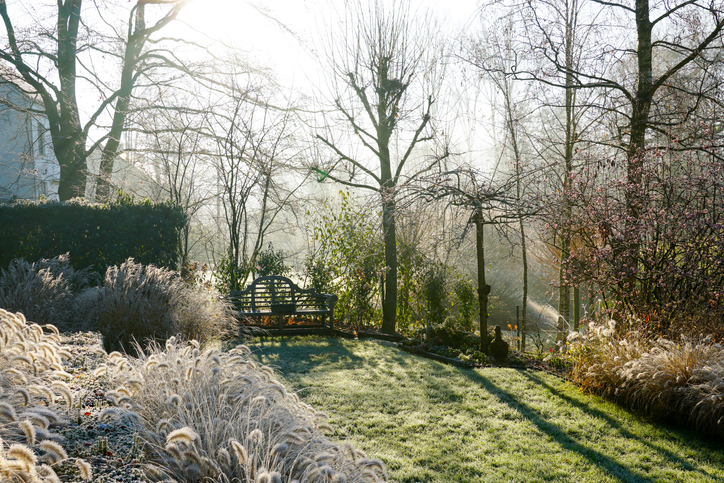If you live in an area that gets frost, it can be challenging keeping your plants alive and healthy. We have some tips to help keep your plants from freezing or getting frost damage.
How is frost damaging to plants?
Frost can cause significant damage to plants, as the freezing temperatures can disrupt the normal metabolic processes of a plant’s cells, leading to cell death. When the temperature drops below 32°F (0°C), the water in the plant’s cells can freeze, leading to cell wall damage and plant death. Frost can also cause desiccation damage to plants, as the cold temperatures cause the plant’s tissues to dry out, leading to wilting, discoloration, and death. Frost can also damage the buds and flowers of plants, preventing them from blooming. To protect plants from frost damage, it is important to cover them with a frost cloth or blanket when temperatures drop.
When to expect frost
Generally speaking, frost is most likely to occur in the autumn and early winter months, particularly in the evenings and early mornings. To get an exact prediction of when frost is likely to occur in your area, you can check with your local weather service or look up the historical frost dates in your area online. It’s also important to consider the specific climate of your area, as well as the average temperatures and precipitation.
How To Protect Your Plants From Frost
Follow these simple tips to keep your plants healthy and thriving when frost comes:

1. Bring Your Plants inside
To protect your plants from frost, the best thing to do is to bring them inside and place them in a sunny spot. Make sure that the room is well ventilated, as high humidity and stagnant air can cause issues like mold and mildew.
2. Water Plants in the Afternoon
it’s important to water your plants in the afternoon to protect them from frost. This is because the water will keep the soil warmer and help to insulate the roots of your plants. Make sure to water your plants slowly and deeply so that the water can get down to the roots.
3. Add a thick layer of mulch
To help protect your plants from frost, you can add a thick layer of mulch around them. Mulch acts as an insulator and can help keep the soil temperature constant, which can help protect your plants from frost damage. Make sure you use mulch that is free of weed seeds, and apply it in a layer at least two inches thick. Be sure to leave enough room around the stem of each plant for air flow and to allow for proper drainage.
4. Cover up plants with a cloche

To protect your plants from frost, consider covering them with a cloche. Cloches are great for protecting plants from cold weather, as they trap the warm air around the plant and help keep it away from the frost. Make sure to use one large enough to fit around the base of the plant, and that you remove it during the day to give the plant access to light and air. With the right cloche, your plants will be safe from frost all season.
A plant cloche is a type of protective cover that is used to protect young plants from frost, wind, and other elements. It is typically made of glass or plastic and helps create a warm, humid environment for the plants. Cloches are often used in home gardens to help extend the growing season and protect delicate plants.
5. Cover plants with a blanket
Covering plants with blankets during cold weather is a great way to protect them from frost. You can use a lightweight, breathable fabric like cotton, linen, or flannel to keep the plant from freezing. Make sure the blanket is large enough to cover the entire plant, but not so large that it holds in too much moisture. Secure the blanket around the base of the plant with stakes or rocks to keep it in place. During periods of extreme cold, you may want to use multiple layers of blankets to provide extra protection.
How to protect citrus trees from frost
Protecting citrus trees from frost can be a tricky process. The best way to protect your trees is to cover them with a frost blanket or burlap cloth when temperatures are expected to drop below freezing. Make sure to secure the blanket or cloth with stakes, and place lights underneath the covering to provide extra warmth. Additionally, you should prune your trees before the winter to allow for better heat circulation and to reduce the amount of foliage that can be damaged by the frost. Lastly, you should also keep your trees well-watered before the frost hits, as this will help the trees survive the cold temperatures.
We hope these tips will help you feel confident about growing beautiful plants in your garden without worrying about the frost.

